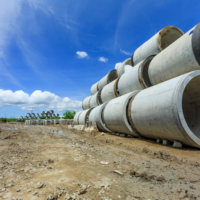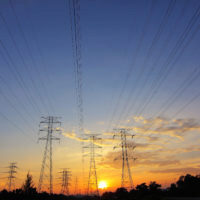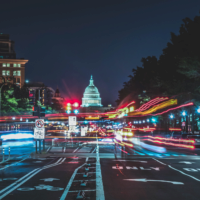A continuation of Summer 2019’s 30 Solutions to Climate Risks: Faculty Proposals from Across the University of Pennsylvania. The following proposals come from students across the university.
In honor of the 50th anniversary of Earth Day, we present Climate Risk Solutions from students:
Awareness: Reduce One-Time Waste on Penn’s Campus by Yifan Chang
“One-time waste is one of the biggest problems on Penn’s campus. However, it could also be one of the easiest problems to solve. Like most universities, Penn holds many large events each day, resulting in the consumption of disposable plates and utensils.”
Facing Floods with Infrastructure by Marina Dauer
“Increased investment in flood risk reduction through infrastructure investment and integrated flood risk management solutions is necessary given the growth in flood events caused by climate change.”
Using Entrepreneurship Principles to Address Climate Risk by Sreshta Ravikumar
“Developing plans to address climate risk is similar to developing a new venture. To make strides against climate change, policies must be enacted to reduce emissions and make greater use of sustainable energy. “
No Limit to Growth – Create Value in Different Full Circles by Richa Agarwal
“As companies can influence design stage and upstream decisions in their supply chain and since the design stage is critical, we need all businesses to take the step and link CE to local solutions and amend their corporate strategy. “
Scaling up Urban Agriculture for Emissions Reduction and Community Health by Ryan Lam
“One solution to reducing emissions involves the expansion and promotion of urban agriculture. The most direct ways in which to decrease the emissions from land use and supply chain are to use less land to grow crops and bring food production closer to the people purchasing the food. Moving more farms within urban centers accomplishes these two goals simultaneously.”
Climate Leaders @ Penn: The Blueprint for Interdisciplinary Climate Education by Sid Radhakrishna
“That day, we launched a University-wide student organization called Climate Leaders @ Penn (CL@P). We defined a mission to create a thriving ecosystem where Penn graduate students could be at the forefront of interdisciplinary leadership on climate change.”
State Utility Incentives for Non-Wire Alternatives by Maeve Masterson
“Many utilities view non-wires measures—with their capability to modernize the grid, manage loads, and reduce peak congestion—as “cutting-edge” grid technologies. With a looming clean energy transition on the horizon, utilities want to stay ahead of the curve.”
De-Abstracting Climate Change by Richard Ling and Catarina Conran
“Climate change can be described as a collective goods problem because every single human being contributes to climate change, yet no one pays for its costs. To compound its complexity, climate change is as much a cultural problem as it is a technological one, as individuals of different ages, political parties, religions, occupations, and socioeconomic status hold different views toward climate change.”
A Green New Deal for Transportation by Emily Kennedy
“The transportation sector is the single largest source of greenhouse gases in the United States, contributing to 29 percent of the nation’s total emissions. The majority of these emissions come from driving. The reality is, we have become far too reliant on cars. It is time for transit triage. We need a Green New Deal for Transportation.”
Plan B: Geoengineering to Cool the Planet by Sam Kaufmann
“Every degree of rapid heating feeds climate instability, exponentially increasing extreme weather events like fires, hurricanes, droughts, and heatwaves. Those events will make many major population centers uninhabitable. The world economy will suffer enormously; vast numbers of people will suffer enormously. We do not have to accept that. There is a Plan B.”
Greening Healthcare Systems by Genevieve Silva
“A recent analysis concluded that the healthcare sector produces 10% of the greenhouse gas emissions in the U.S., outpacing the total emissions from all but 12 countries in the world. Greening the healthcare sector—at the levels of hospital systems and private practices—is, therefore, a high-yield target in moving toward climate solutions.”
Building Popular Support for a Carbon Tax When Americans Don’t Trust the Experts by Alexander Quinn
“The consensus among today’s economists is that a carbon tax is one of the most effective tools for reducing carbon dioxide emissions. Among many Americans, however, concerns over cost-of-living and the competitiveness of American manufacturing trump the recommendations of policy experts.”
Brought to you by:














